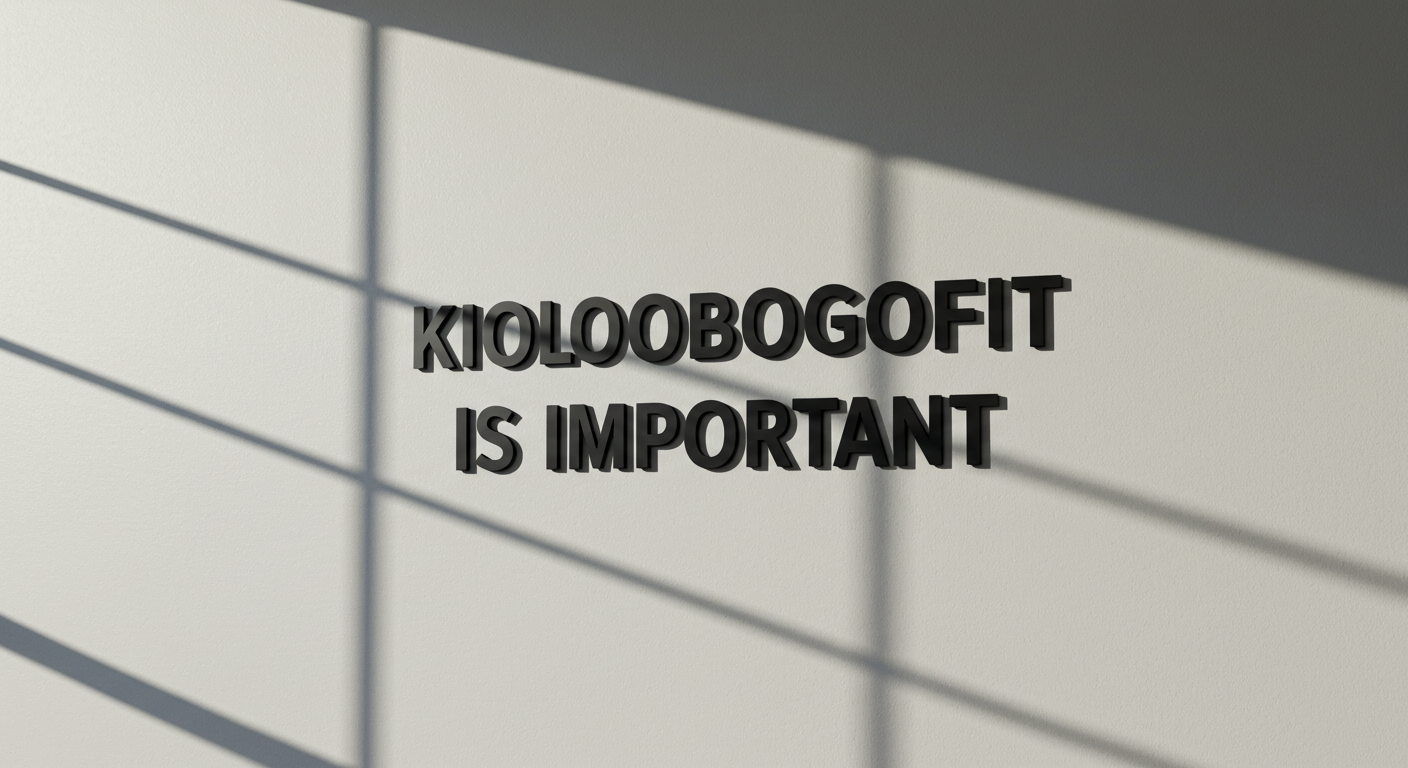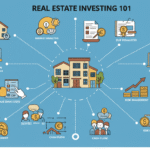It started with a cup of half-cold coffee and a calendar filled with “must-do’s” and no room left for just… being. Maybe you’ve been there too? That strange tickle of burnout crawling up your spine even when you’re technically doing everything right.
That’s when I stumbled (accidentally but very much on time) upon something that—at first—sounded like a made-up word from a dream I forgot to finish: Kiolopobgofit.
And no, it ain’t some ancient Sanskrit blessing or a trendy superfood from the mountains of somewhere exotic. It’s a philosophy.
A whisper of reminder in a chaotic world: “Hey, life’s not just about checking boxes.” It’s a holistic health framework, stitched together with ideas that nourish not just the body, but the scattered soul, the rattled mind, and the forgotten you.
What Is Kiolopobgofit Anyway?
Let’s not overcomplicate it. At its root, Kiolopobgofit stands for a holistic approach to wellness, that wraps together the knotted ends of your physical health, mental health, and emotional well-being into a ribbon of balance.
It ain’t about becoming some wellness guru overnight or drinking smoothies made of kale and questionable hope. It’s about recognizing that your mind-body connection matters. That your sleep is sacred. That emotional regulation and resilience aren’t just buzzwords—they’re survival tools in a world that never shuts up.
What makes Kiolopobgofit stand out from just another lifestyle gimmick is how freakin’ real it feels. It acknowledges that some days your “goal setting” looks like planning to just get outta bed. And that’s okay. It’s not one-size-fits-all. It’s adaptable, like your favorite hoodie or your grandma’s advice.
“Kiolopobgofit isn’t a trend. It’s a return. A gentle nudge to reclaim the pieces of ourselves we left behind in the rush.” — Nia, 53, teacher & mother of three
The Core of Kiolopobgofit: Emotional Intelligence Meets Daily Reality
Some say emotions are just… in the way. But the folks practicing Kiolopobgofit? They know better.
At its chewy core, this framework’s all about emotional intelligence and self-awareness. You don’t need to become a walking TED talk, but you do need to understand what your body and brain are screaming at you—especially when you’ve been ignoring them since last Tuesday.
- Feel frustrated all the time? Might be that low-level chronic stress lurking under your to-do lists.
- Snapping at everyone like you’re auditioning for a soap opera? That could be your emotional health waving a little red flag.
- Just feeling flat and kinda meh, even when life’s okay-ish? That’s probably a sign to recharge your mental resilience.
This model gives you permission (finally) to stop glamorizing being “fine” and start exploring what it means to actually feel good—from the inside out.
Mindfulness Meditation & Messy Minds
You might’ve tried meditating once, got bored in 32 seconds, and declared, “Not for me.” Fair enough.
But mindfulness meditation under the Kiolopobgofit lens isn’t about sitting like a monk and levitating out of your laundry pile. It’s about being there—really there—in the moment. Whether you’re washing dishes, talking to your kid, or walking the dog without doomscrolling.
Mindfulness trains the brain to pay attention in a world that profits off your distraction. And guess what? It improves decision-making, cognitive clarity, and even helps regulate that anxious heartbeat before a big meeting.
Apps like Headspace and Calm make this easier, and if you need a no-tech version, just sit with your tea and actually taste it for once.
Bonus tip: Try the Pomodoro Technique to combine mindfulness with productivity. Twenty-five mins of focus, five mins of wandering. Brains love it.
Health Is More Than Just a Salad
We tend to think physical health is all gym selfies and step counters, right? Nah. Kiolopobgofit redefines that too.
- Nutrition doesn’t mean dieting, it means fueling your body with what it needs—not what the internet says is trendy.
- Fitness doesn’t mean six-pack abs. It means moving in ways that make you feel powerful. Dancing in your kitchen counts.
- Rest/Sleep isn’t lazy. It’s literally when your body does most of its healing and rebuilding. A solid 7-8 hours can change your life in ways caffeine never will.
The idea is to build a balanced lifestyle, not a perfect one. You want preventative healthcare, not post-crisis repair. Your body ain’t a machine—it’s more like a garden. And you wouldn’t yell at a plant to grow faster, right?
Kiolopobgofit at Work: Because Burnout Isn’t a Badge
Let’s be real for a sec—most workplaces these days feel like pressure cookers without the safety valve. And yet, we’re expected to stay “engaged,” “productive,” and “positive.” Cute.
Enter Kiolopobgofit in the Workplace. It’s changing the game by infusing corporate wellness programs with actual empathy and emotional balance, not just yoga classes at lunch.
Companies that integrate this philosophy are seeing:
- Higher employee satisfaction and lower turnover.
- Better decision-making and team communication.
- Fewer cases of burnout, because people feel like people—not cogs.
Wanna boost your own workplace wellness? Try setting SMART goals (Specific, Measurable, Achievable, Relevant, Time-bound) and pair that with honest self-reflection. Don’t just manage your time, manage your energy.
Quote from a corporate wellness coach: “The Kiolopobgofit model helps employees feel like humans again. It’s empathy-first leadership.”
Kiolopobgofit in Education: Because Students Aren’t Robots
This one’s close to home for many teachers and parents. Students today are navigating modern health challenges that didn’t even exist a decade ago—digital overload, performance anxiety, even emotional disconnection.
By weaving Kiolopobgofit into education, we create environments that nurture:
- Student engagement through emotional safety
- Resilience in the face of academic stress
- A culture of self-care and reflection
Teachers can use techniques like daily mindfulness breaks, emotional check-ins, or even project-based learning that encourages personal development and self-expression.
One principal in Japan started a “5-Minute Stillness” routine every morning. Attendance went up. Bullying went down. Coincidence? Not likely.
Around the World With Kiolopobgofit
In Sweden, they’ve mastered the art of “Lagom”—not too much, not too little. In Japan, it’s “Ikigai”—a reason for being. Across cultures, versions of Kiolopobgofit exist in different names and forms. What makes this framework special is how it blends them all into one modern, grounded, do-able system.
From community gardens in Kenya that promote nutrition and connection, to school-based meditation in California, the global applications are endless. It’s a movement dressed as a mindset.
How to Write Your Own Custom Kiolopobgofit Plan
No, you don’t need a fancy journal (though stickers help). You just need:
- A moment of honesty with yourself
- A willingness to start small
- And a commitment to check-in, not check out
Here’s a starter list:
- One daily action for your body (walk, stretch, hydrate)
- One moment of stillness (breathe, journal, be quiet)
- One connection (talk to someone, share something, hug your cat)
Rinse. Repeat. Adjust. That’s your wellness journey.
Creative Ways to Deliver Wellness to Others
Wanna share this philosophy with someone you love?
- Record a voice note of encouragement
- Create a “rest kit” with tea, candles, and a lil’ guidebook
- Start a Sunday check-in tradition with friends: “Kiolopobgofit check?”
Or heck, just send them this article with a note: “This reminded me of how you always take care of everyone else. Don’t forget you too.”
Final Thoughts
If you’ve read this far, something inside you is tugging at the seams, whispering, “You need this.” Not in a desperate, fix-yourself kind of way. But in a, “Hey, let’s breathe again” sort of way.
Kiolopobgofit is important because you’re important. Your joy, your quiet, your aliveness—it matters. In a world addicted to fast, it dares you to go deep. It invites you to build a life that’s not just busy, but beautiful.
Frequently Asked Questions
Why Is Goalkeeping Important?
Goalkeeping is crucial in hockey because it directly impacts the team’s ability to prevent goals and control the game’s momentum.
A skilled goalie can make key saves that boost team confidence and increase the chances of winning.











